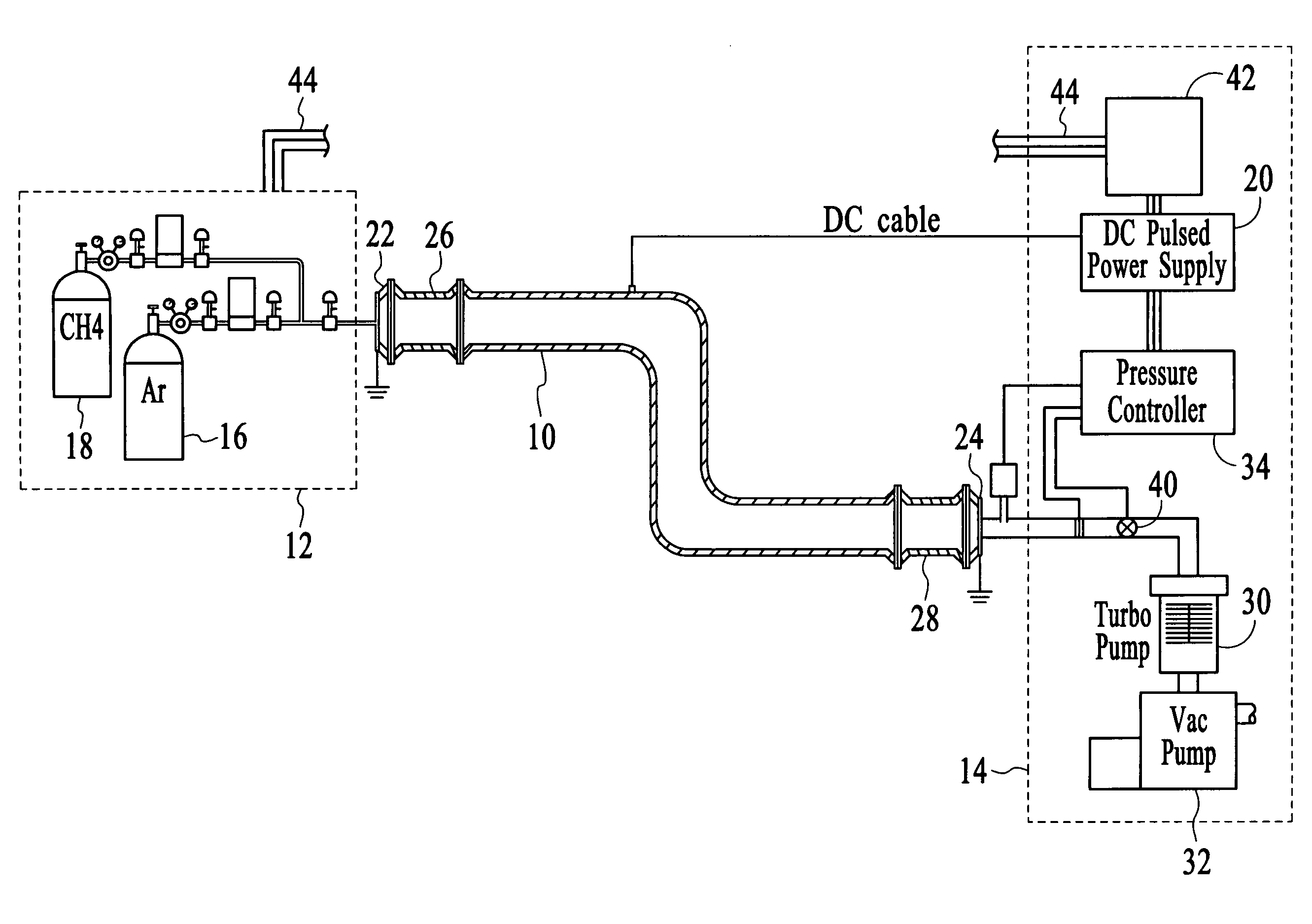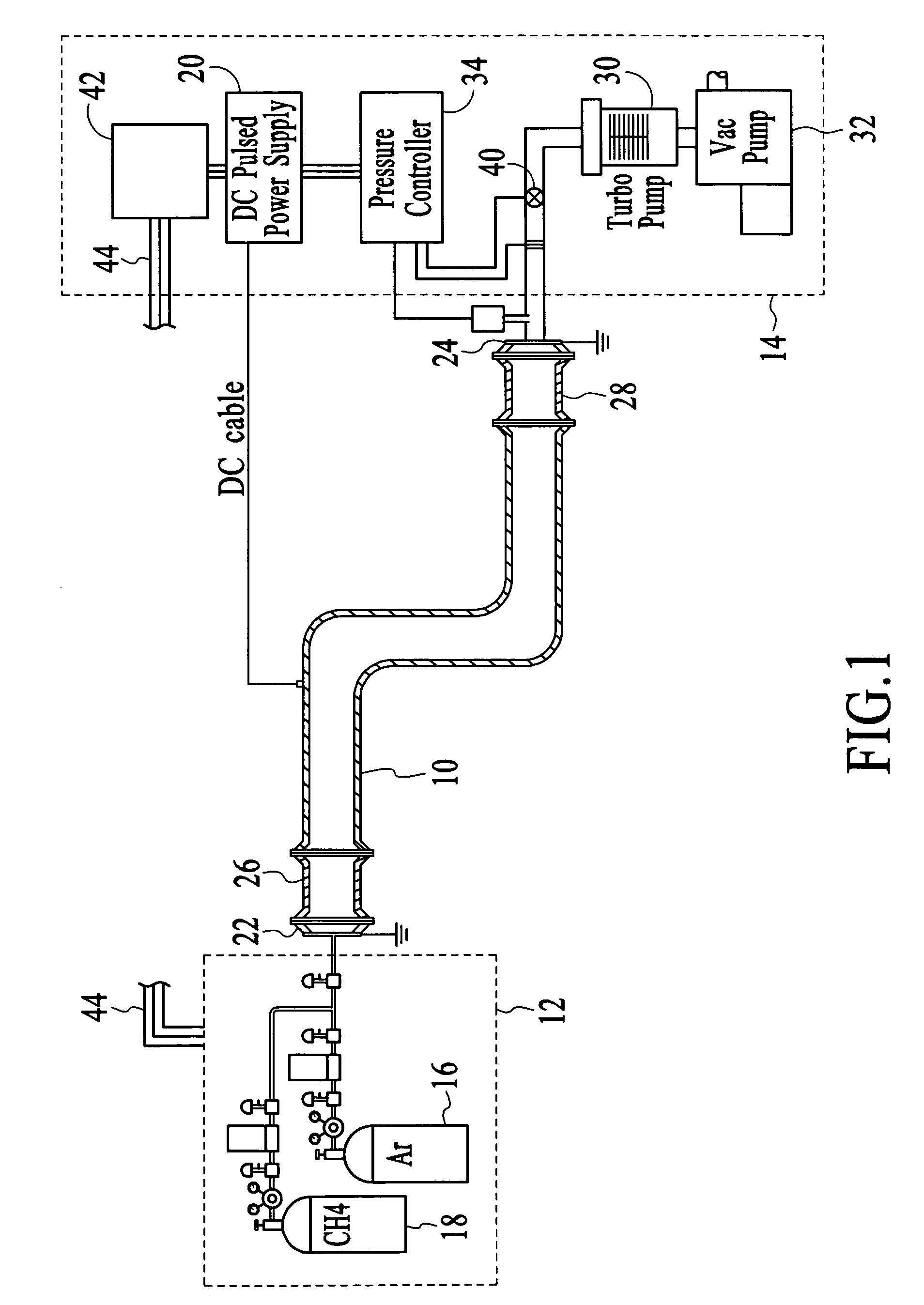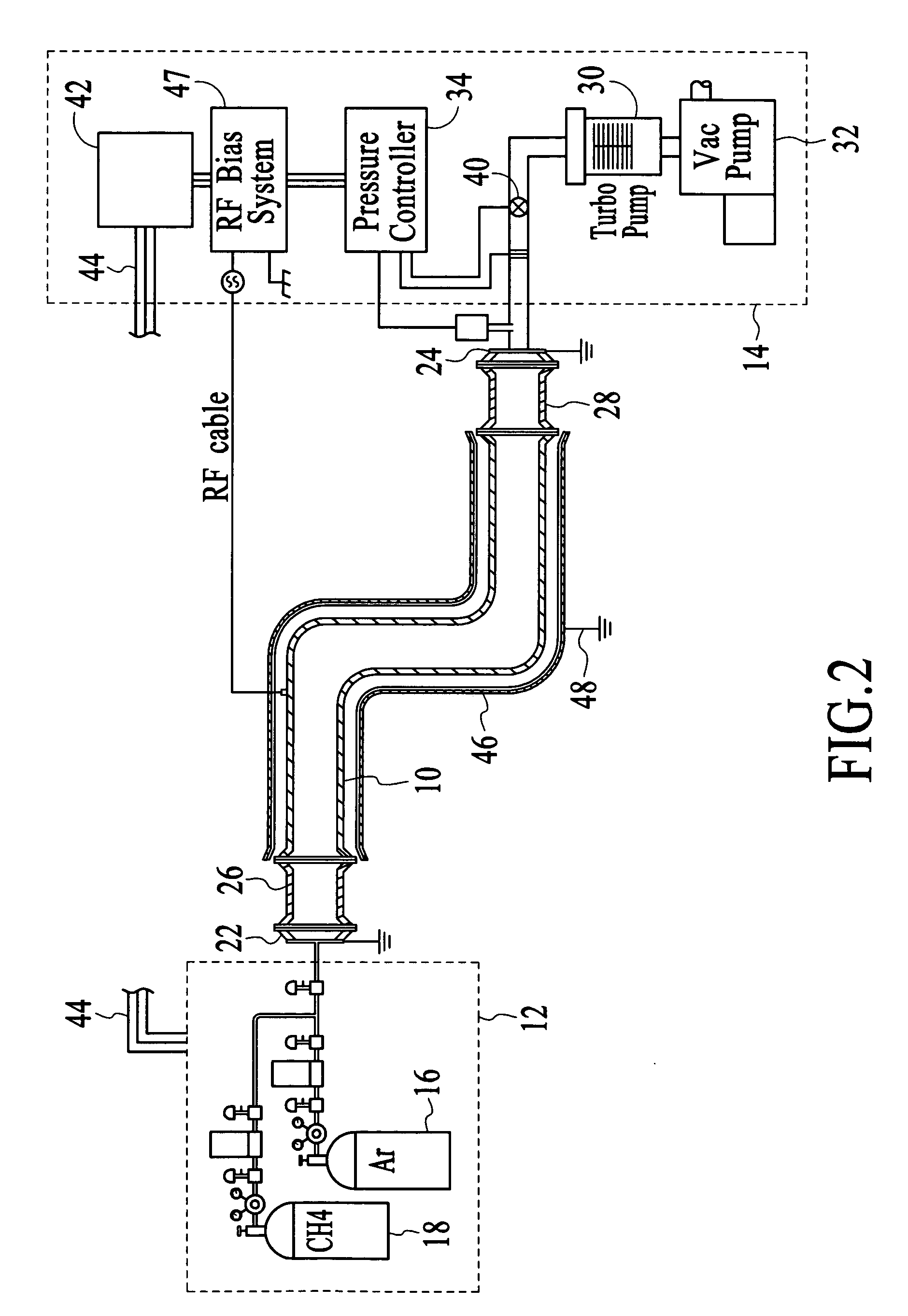Method and system for coating internal surfaces of prefabricated process piping in the field
a technology of prefabricated process piping and internal surfaces, which is applied in the field of coating piping systems, can solve the problems of multiple ionizing collisions and a more intense plasma, and achieve the effect of increasing the magnitude of bias and improving the adhesion of dl
- Summary
- Abstract
- Description
- Claims
- Application Information
AI Technical Summary
Benefits of technology
Problems solved by technology
Method used
Image
Examples
Embodiment Construction
[0023]With reference to FIG. 1, a conductive piping, or “workpiece,”10 is shown as being connected to a system that includes a gas supply subsystem 12 and a process control subsystem 14. The workpiece is shown as a single piece, but may be an assembly of tubes or pipes. The assembly should have all welding and assembly steps completed and should be leak tested prior to the coating process to be described below. A readily available non-toxic carbon containing gas, such as methane or acetylene, is provided by a first gas supply container 16. This gas is used to form a diamond-like carbon (DLC) coating on the inside of the workpiece. Argon (or other sputter gas) is provided from a second gas supply container 18 to allow plasma “pre-cleaning” of the pipe surface, and mixing of Ar and carbon-containing gas.
[0024]A DC pulsed power supply 20 is used to apply a negative bias to the workpiece 10. This bias is used to (a) create a plasma between a cathode and a grounded anode, (b) draw an ion...
PUM
| Property | Measurement | Unit |
|---|---|---|
| pressure | aaaaa | aaaaa |
| pressure | aaaaa | aaaaa |
| pressure | aaaaa | aaaaa |
Abstract
Description
Claims
Application Information
 Login to View More
Login to View More - R&D
- Intellectual Property
- Life Sciences
- Materials
- Tech Scout
- Unparalleled Data Quality
- Higher Quality Content
- 60% Fewer Hallucinations
Browse by: Latest US Patents, China's latest patents, Technical Efficacy Thesaurus, Application Domain, Technology Topic, Popular Technical Reports.
© 2025 PatSnap. All rights reserved.Legal|Privacy policy|Modern Slavery Act Transparency Statement|Sitemap|About US| Contact US: help@patsnap.com



